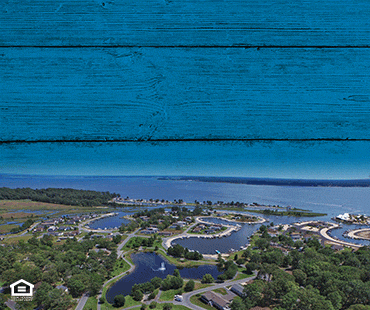Water Stewardship
- Details
- Written by Kris Legates
Three Lakes, Many Questions
By Andrew Sharp
Photograph by Scott Nathan
From the September 2023 issue

People used to view ponds and streams as convenient spots to dump old tires, refrigerators and the like. By and large, attitudes have changed, but you can still find plenty of trash in these bodies of water, as well as invisible nutrients from our yards and fields that drain into them, spawning noxious algae blooms.
Join the Crowd
- Details
- Written by Kris Legates
Coastal Delaware’s population has been skyrocketing for decades. Are we peas in a pod … or scorpions in a shoebox?
By Bill Newcott
From the October 2023 issue

Absolutely every time I hear someone complain about how crowded it’s getting in coastal Delaware, I think about a comic strip I clipped about 30 years ago.
In this particular entry from Patrick McDonnell’s “Mutts,” a dog and a cat are aghast at how many rabbits have recently been born in their neighborhood.
“Don’t you think something should be done about overpopulation?” the dog demands of one floppy-eared newcomer.
“Sure,” the bunny responds. “Now that I’m here.”
That call-and-response could echo just about anywhere you wander around the Delaware beach area: among drivers cruising for parking spots in Bethany Beach … patients crowding into a Lewes dentist’s office … diners waiting outside a Long Neck restaurant … bicyclists passing yet another forest being felled to accommodate a house-choked “preserve.”
The complaint rises like the rippling heat waves above the cars lined up on Route 24. It whines like the families who’ve just heard they won’t be getting into overcrowded Cape Henlopen State Park that day.
A Balanced Market
- Details
- Written by Kris Legates
A slight price dip from 2022 heartens homebuyers, but other robust indicators cheer sellers
By Andrew Sharp
Photograph by Scott Nathan
From the October 2023 issue

Forty-five minutes after Mark and Cynthia Lotz toured the home on Dirickson Creek, they made their decision: They would put in an offer. The Harford County, Md., couple had been hunting for a second home and previously had their hearts set on one, only to lose out.
They didn’t want to see that happen again.
The Dirickson Creek location, not far from Assawoman Wildlife Area, didn’t match all of the goals they set when starting their search, which included being within walking distance to the beach and having a boat slip. “We had a checklist of, like, 10 things we were looking for and realized, we’re not going to get all that,” Mark explains. “We started to compromise [and] whittle away at our checklist.”



